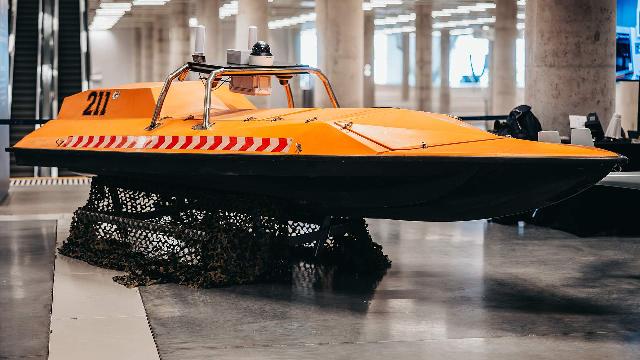The Russian Navy will receive a full-fledged reconnaissance and strike platform
The Skvorets-NAVY drone is being upgraded for use with unmanned boats (BEC). Combined into a single complex, backup and attack UAVs can be used to launch covert strikes against coastal military installations, as well as to organize ambushes on sea communications. It will also be in demand to combat the enemy's backups. Experts note that after the implementation of this project, the Russian Navy will receive a full-fledged robotic reconnaissance and strike platform.
Dangerous spark
The decision to create a single complex — working in pairs of back and UAVs — was made at the technical council for the development of marine unmanned systems, chaired by Admiral Alexander Moiseev, Commander-in-Chief of the Russian Navy, in April this year, the Center for Unmanned Systems and Technologies (CBST) told Izvestia.
The main strike and reconnaissance element of the BACK-UAV spark will be a small Skvorets-NAVY drone, a universal FPV attack platform that will be modified to launch from unmanned offshore boats. This attack drone with a range of up to 10 km can carry up to 1.5 kg of payload. The speed of the device is up to 150 km/h. It is controlled by the operator in real time via specialized radio communication channels with the possibility of retransmission. In the future, satellite transmission of commands may be implemented, the development company Technodron JSC told Izvestia.
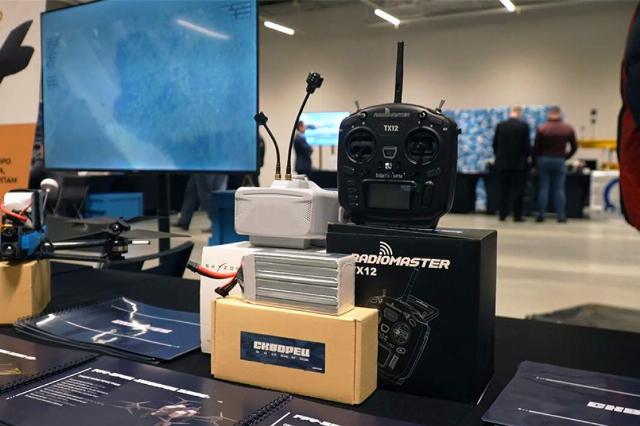
Photo: CBST press service
Image source: iz.ru
According to the interlocutors of the publication, the device is equipped with a sealed case with an anti-corrosion coating, adapted to conditions of high humidity and salty sea air.
For installation on offshore platforms, vibration-resistant fasteners with automatic opening at launch are integrated into the drone's design. As well as an enhanced power supply system with the ability to quickly recharge from the onboard system of a crewless boat.
—The Skvorets-NAVY UAV will be launched directly from the backup and act as a remote reconnaissance or strike element," experts told Izvestia. — The drone will move 5-10 km away from the boat and conduct visual or IR reconnaissance of targets. When it is detected, the operator will direct the UAV to the target. It can be equipped with various types of combat load, including cumulative or fragmentation ammunition. If necessary, the drone can be used in conjunction with other kamikaze drones.
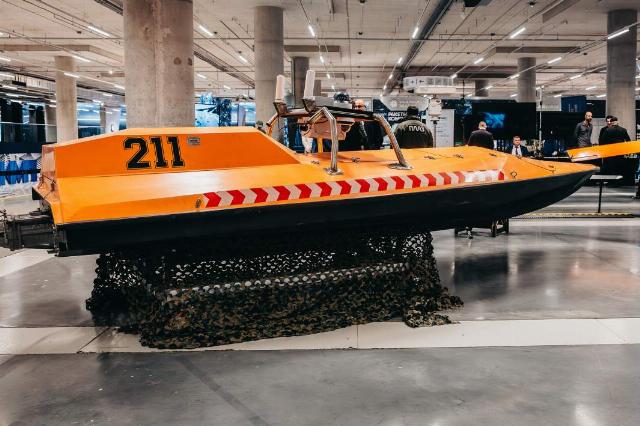
Photo: CBST press service
Image source: iz.ru
According to the developers, the Skvorets-NAVY UAV is compatible with most modern backups. For example, with a Katran-type platform, where the drone was installed on the aft deck in a special launch niche.
Work is also underway on integration with other promising marine back-ups, including domestic developments used in the Black Sea.
Amphibious operations and raids
The UAVs used from the back can solve many tasks in modern combat conditions, military expert Dmitry Boltenkov told Izvestia.
"Among them is the impact on the anti—amphibious defense zone," he noted. — Its Armed Forces on the Black Sea coast began to be built back in 2022. In such operations, the main targets for UAVs are pillboxes, bunkers, military equipment, dugouts, and places where personnel congregate. The war has become robotic. Previously, the landing zone would have been handled by amphibious assault ships and amphibious support forces. Now drones will do it first. A pack of backups will covertly approach the main and demonstrative landing areas, after which they will release a swarm of UAVs that will strike coastal targets.
Backups from UAVs can also be used during raid operations.
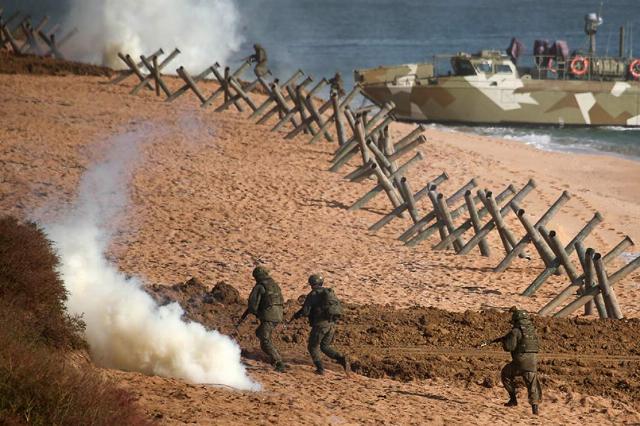
Photo: TASS/Sergey Malgavko
Image Source: iz.ru
"Unmanned boats will be able to approach the desired area, after which the UAV can strike coastal airfields, military factories, and firing positions," the expert noted.
Such equipment can become the basis of the unmanned forces of the Russian Navy in the future, military expert Yuri Lyamin is sure.
"It is known that many countries have now started working on such spark systems," he told Izvestia. — We need to at least keep up. The main problem that I think our developers will have to solve is ensuring reliable communication from the control point to the unmanned boat and from the backup to the UAV. In the West, they use Starlink satellite communications, but we cannot go this way — we will become dependent on this company. Transmitting a reliable radio signal still limits the range of boats and UAVs. Ideally, we need our own satellite constellation, like Starlink, and work is underway on this.
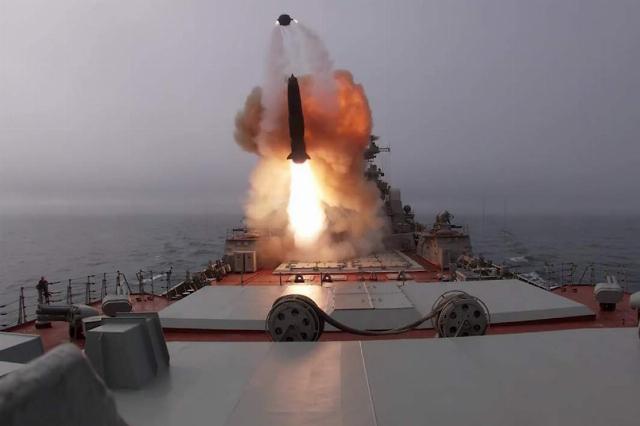
Photo: RIA Novosti/Ministry of Defense of the Russian Federation
Image source: iz.ru
A UAV, even with small warheads, operating from a backup, is a dangerous opponent, Yuri Lyamin noted.
"They can cause serious damage even to a large warship," he noted. — A pack of backups with dozens or hundreds of UAVs can overcome the air defense of a well-armed ship. Especially if they launch a massive attack from different directions. They won't have to sink the ship. They will be able to deliver sensitive strikes on the most important systems — to disable radars, communication systems or antennas, after which the ship will go blind, and it will be possible to finish it off with the same anti-ship missiles, which will not be difficult.
The program for building backups
The production of marine drones has already been launched in Russia. It is known about the unmanned Katran boat that it is capable of performing a wide range of functions: patrolling, reconnaissance, radar surveillance, logistics, and strikes.
Earlier, Izvestia reported on the start of mass production of a heavy returnable marine drone based on the unmanned Vizir boat. He can work unaccompanied by an operator — on artificial intelligence control.
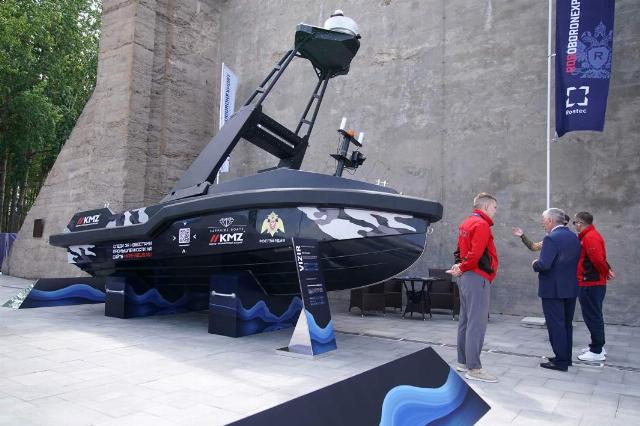
Unmanned boat "Vizir" at the International Naval Salon "Fleet-2024"
Image source: Photo: IZVESTIA/Sergey Lantyukhov
The device can be used for cargo delivery, reconnaissance, and it is also capable of carrying guided weapons on board. After completing the task or after a certain time, the "Vizier" can independently return to the starting point of his route.
Earlier, Izvestia wrote that the Marlin unmanned kamikaze small displacement boat was developed at the Ushakov Baltic Higher Naval School.
It exists in two versions — river and sea. The river modification of the device carries 1.5 kg of explosives and is designed to destroy enemy watercraft and amphibious assault. The marine is equipped with 2 kg of explosives, its task is to protect ships from unmanned enemy boats. Backup control is carried out in the same way as FPV drones.
Bogdan Stepovoy
